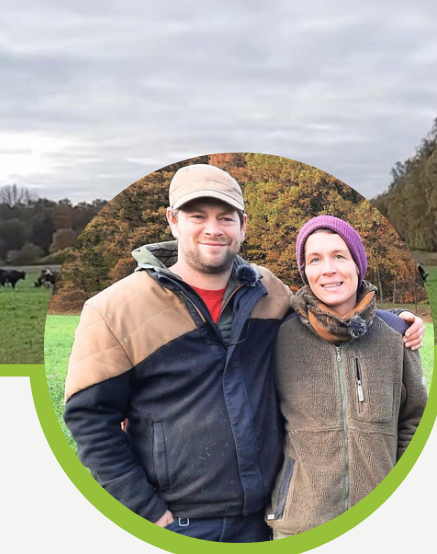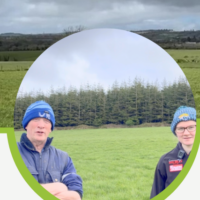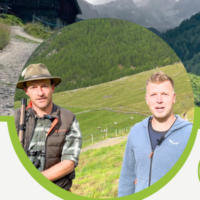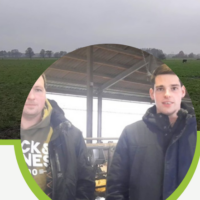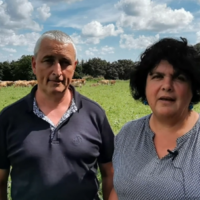When the land is dry, diversification and know-how can be key
Annabelle GERARD & Christian FRIEBE – Improvement of grassland management
PDF Practice abstract (english)
Description
Practice abstract
The organically managed Tangsehl farm is located on sandy soil in Northern Germany and manages 110 ha grassland and 50 ha arable land. As a diverse, mixed crop-livestock farm, they milk a crossbred herd of about 30 cows. Their main challenge on this rather dry site has been the availability of water to maintain a certain level of grassland productivity. Also, they manage leased land which comes with some degree of uncertainty and less planning security for the future.
To cope with a drier climate and sandy soil conditions, they saw the need for a type of management that supports the build-up of humus and good soil cover by retaining high levels of organic matter: as soon as the grass enters the three-leave-stage, cows are rotated across the paddocks rather fast and in high densities, allowing them to take up only the upper third of the sward which reduces the risk f grass entering the reproductive phase. Due to the high stocking density and short grazing period, trampled residues remain and form a mulch layer. The idea is that this return of organic material increases soil fertility, microbiome, and water retention capacity. Therefore, in contrast to other grazing strategies, residues are not considered a waste, but a valued input of organic matter. This approach does not require investments in technology but planning and know-how of the interactions between growth period, livestock, and soil.
However, such a system implies lower levels of production output. To compensate for this and to foster independence from market prices, the farm adopted direct-marketing of milk and dairy products. Through solidarity-based agriculture, the farm established close ties with a network of local clients whose financial contributions to the farm are returned to them in form of products from the farm.
Finally, to avoid high investments in the construction of a conventional milking parlour – the farm is based on leased land – they opted for a mobile milking parlour (MoohTech). This appeared to be cheaper in their case and offers the opportunity to also milk on the pasture.
Context profil
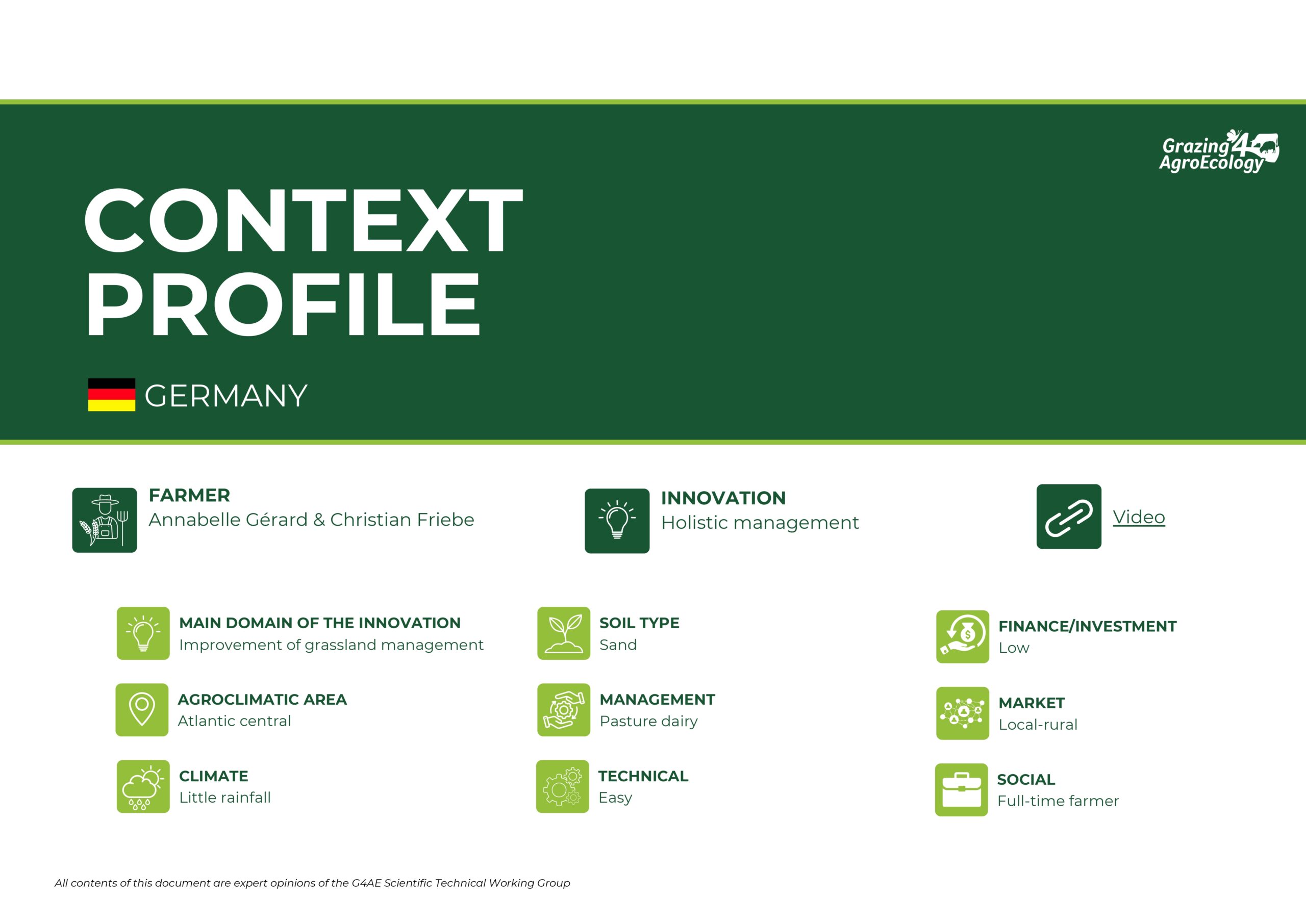
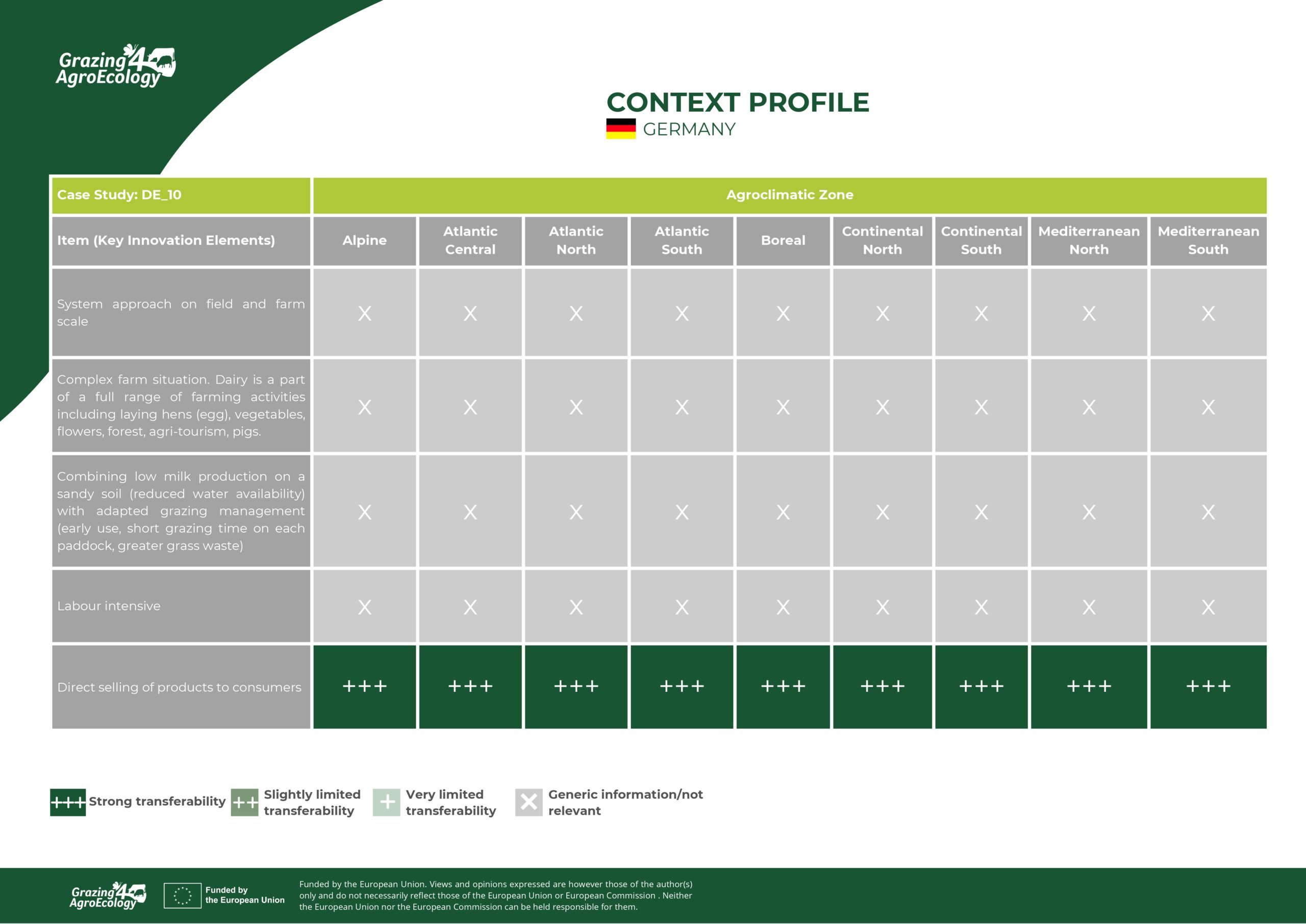
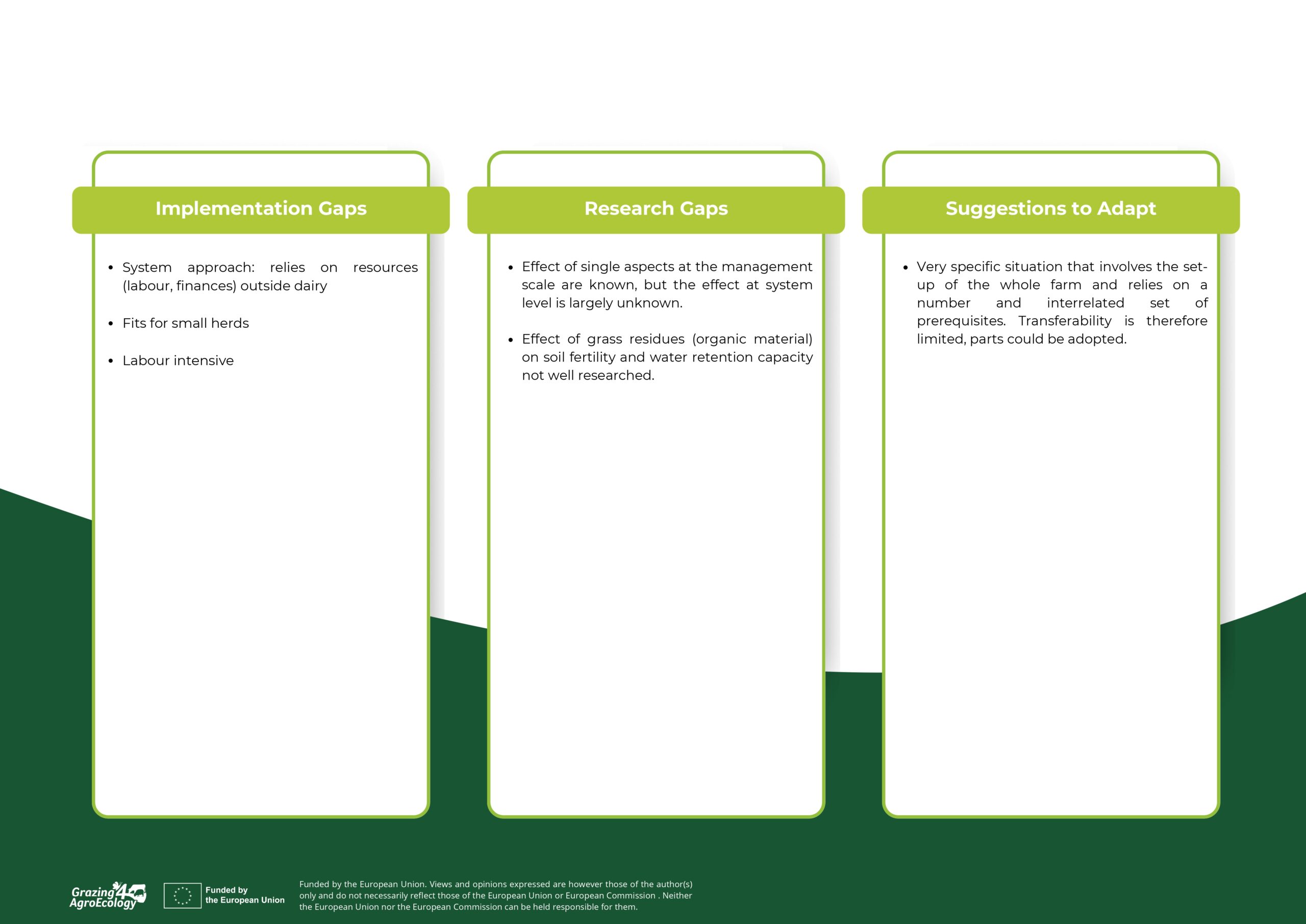
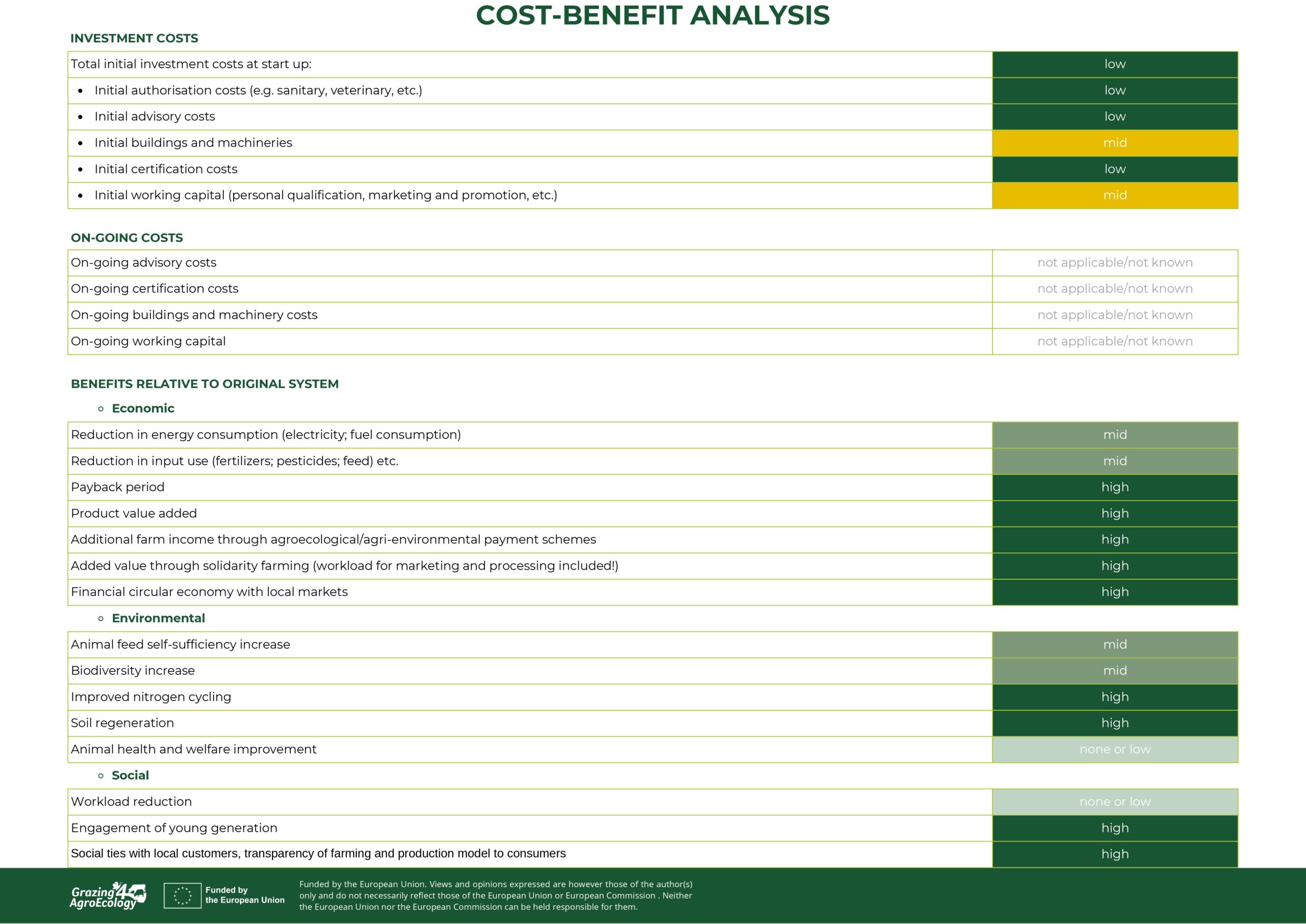
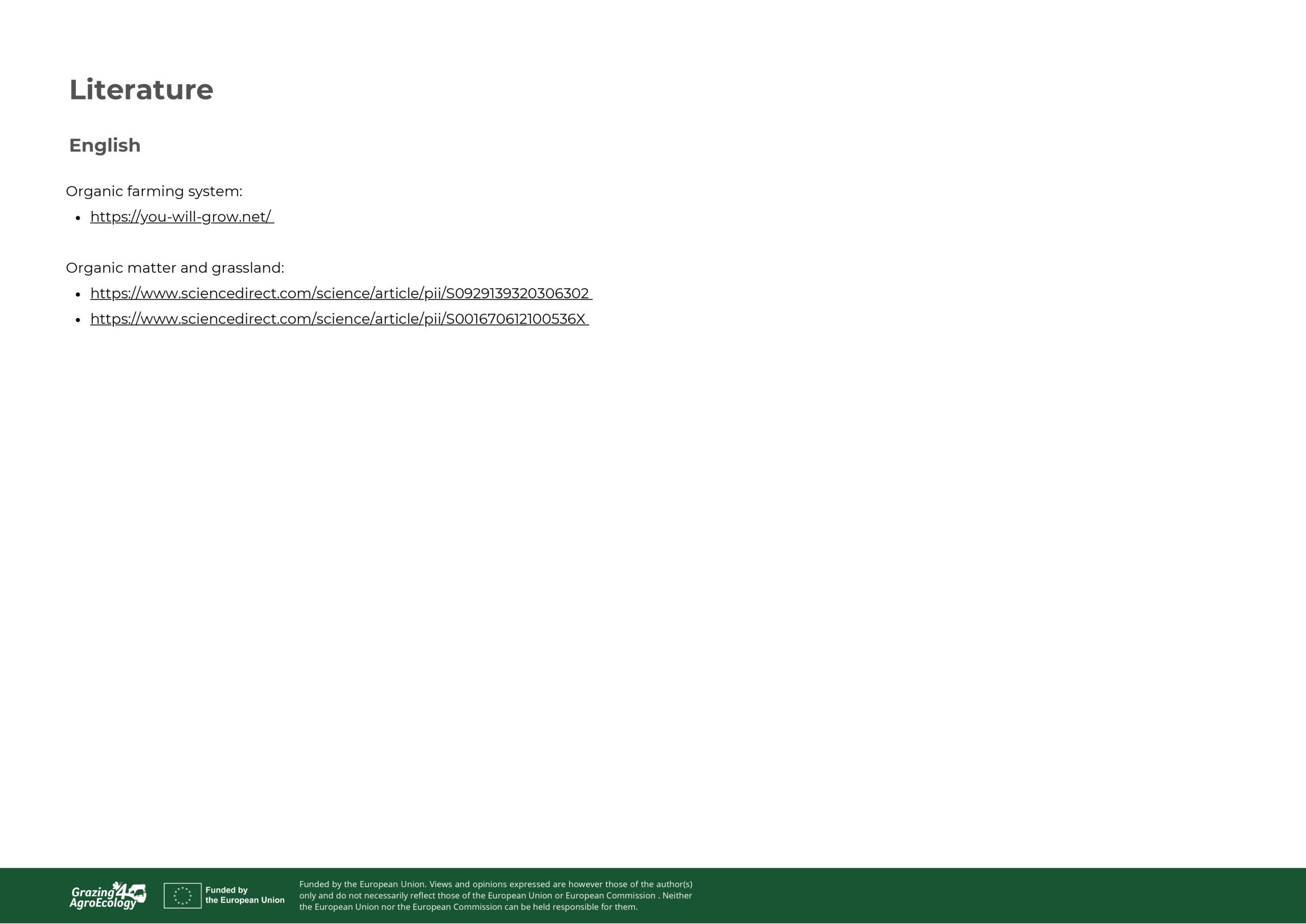
Additional information
| Main domain of innovation | Improvement of grassland management |
|---|---|
| Agroclimatic area | Atlantic central |
| Climate | Little rainfall |
| Soil Type | Sand |
| Management | Pasture dairy |
| Technical | Easy |
| Finance/investment | Low |
| Market | Local-rural |
| Social | Full-time farmer |
